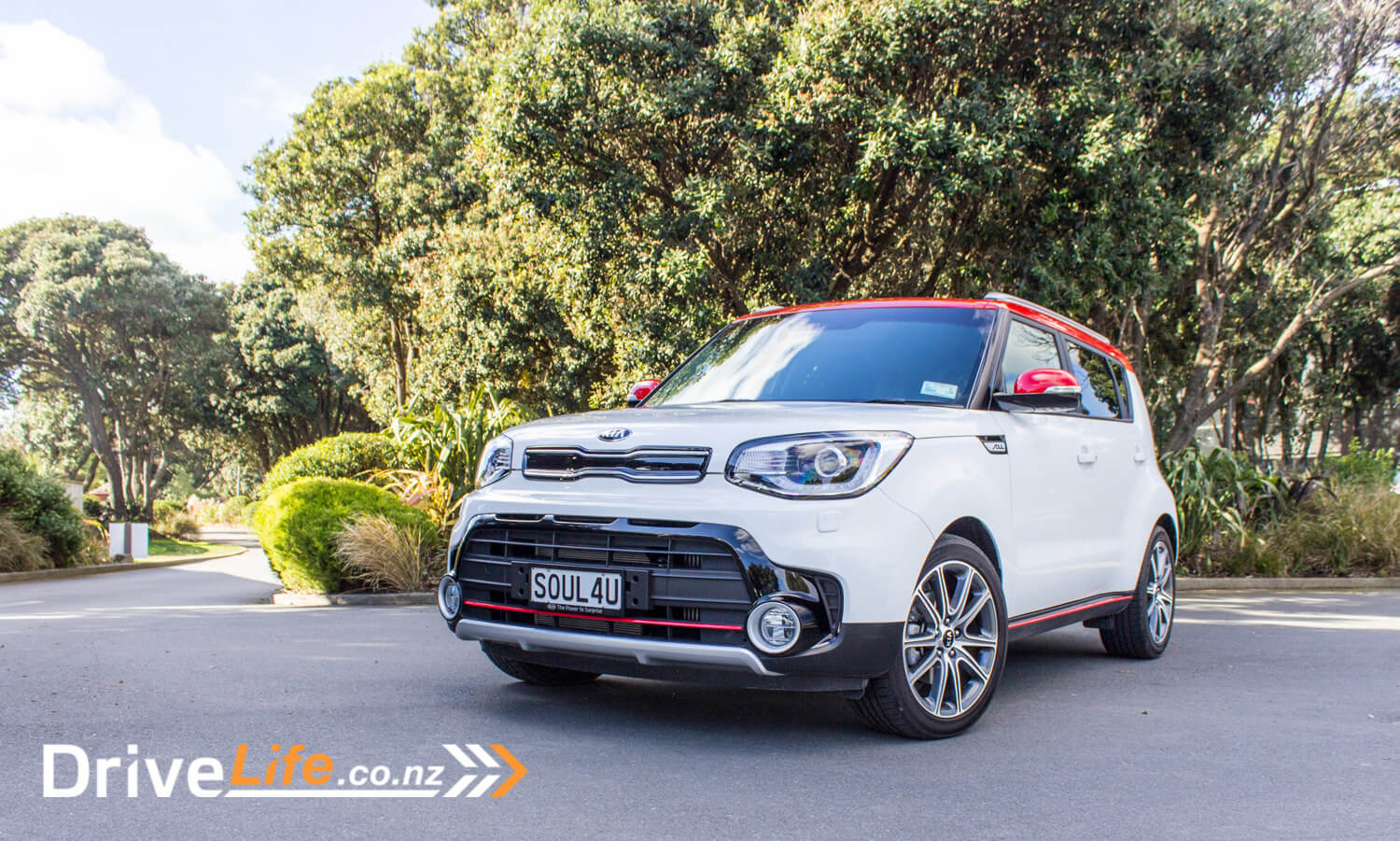I tested the non-turbo version of the Soul in 2016 and while I declared it “fun and funky”, I had some reservations. For a 2-litre, it felt pretty gutless, it was a bit thirsty and the media screen was tiny at 4.3”. Otherwise it was a nice ride.
Not long after that, Kia launched the Turbo version, with some of the highest power and torque numbers in the compact SUV segment.
Could this make it an ideal small SUV? Looking at it on paper, space, style and performance seem to the Soul’s strengths. Time to spend a week with it to really find out.
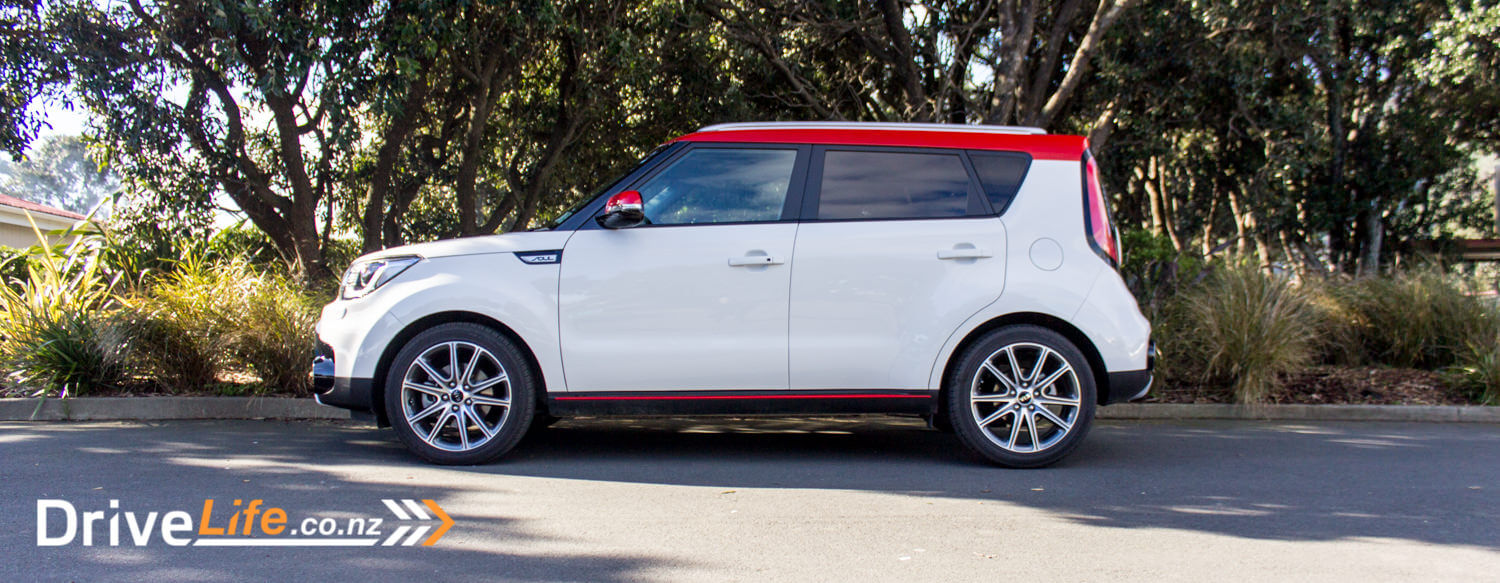
The Range
With the addition of the Turbo model, there’s now three available; the base level 1.6 Soul Urban, the Soul Limited with the standard 2.0-litre engine, and then the new Soul Turbo 1.6. You can read about the first two models in my previous review.
For the Turbo model, you pay a bit more – $37,990 compared to $35,990 for the Limited. For that, you get the 1.6 turbo motor which puts out 150Kw of power, compared to 112 of the non-turbo. Torque is up massively at 265Nm compared to 192 for the 2-litre. That’s a fair increase in both, with the smaller capacity motor.
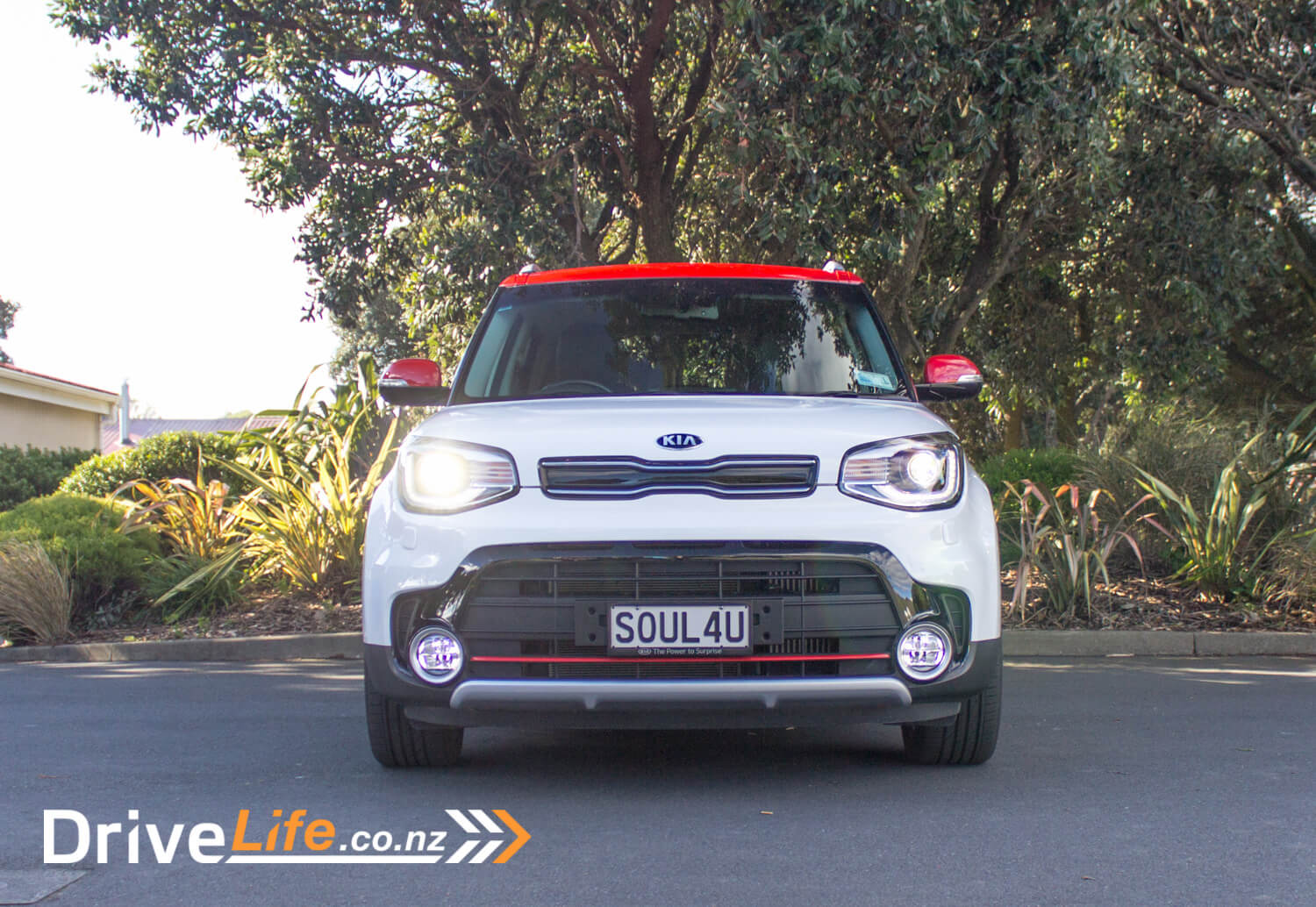
The transmission also changes – the 6-speed auto of the other models is dumped for a 7-speed Dual Clutch Transmission (DCT).
Brakes are the same across both Limited and Turbo models, and the same size wheels (18” alloys) are used but with different designs. Naturally you get most of the same things that the Limited model has, like Blind Spot Protection, Lane Change Assist, Rear Cross Traffic Alert, heated mirrors, leather interior with power driver and passenger’s seat, a 5” touch screen, climate AC, keyless entry and start, cruise control, and auto headlights.
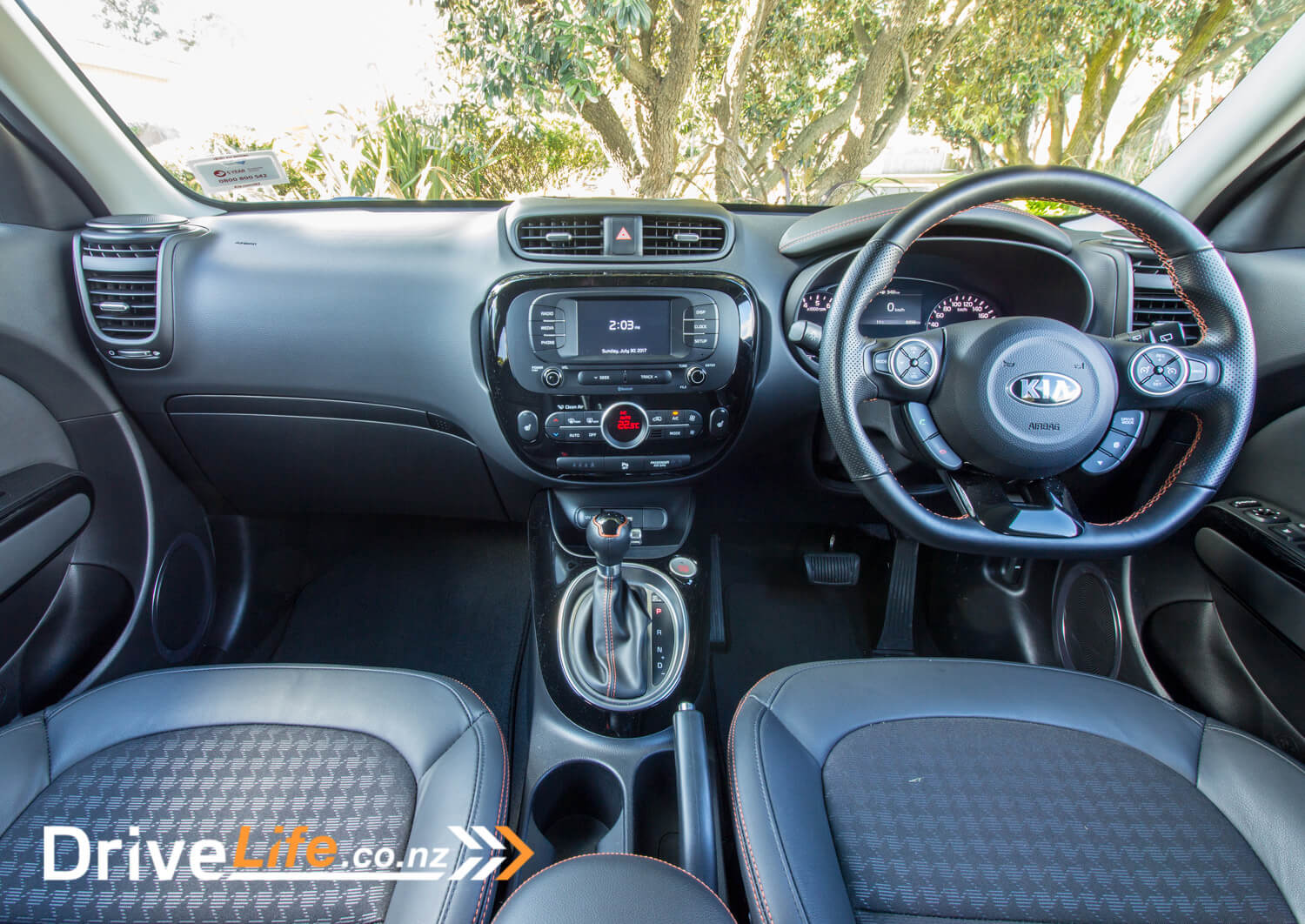
You do lose a few features from the Limited model. Gone are the front parking sensors, the ventilated front seats, and the mudguards, The seats are a leather/cloth mix, compared to full leather in the Limited.
However added to the Turbo are HID Xenon lights in place of the other models’ projector headlamps. It also gets twin exhaust tips, and a handy under-floor compartment.
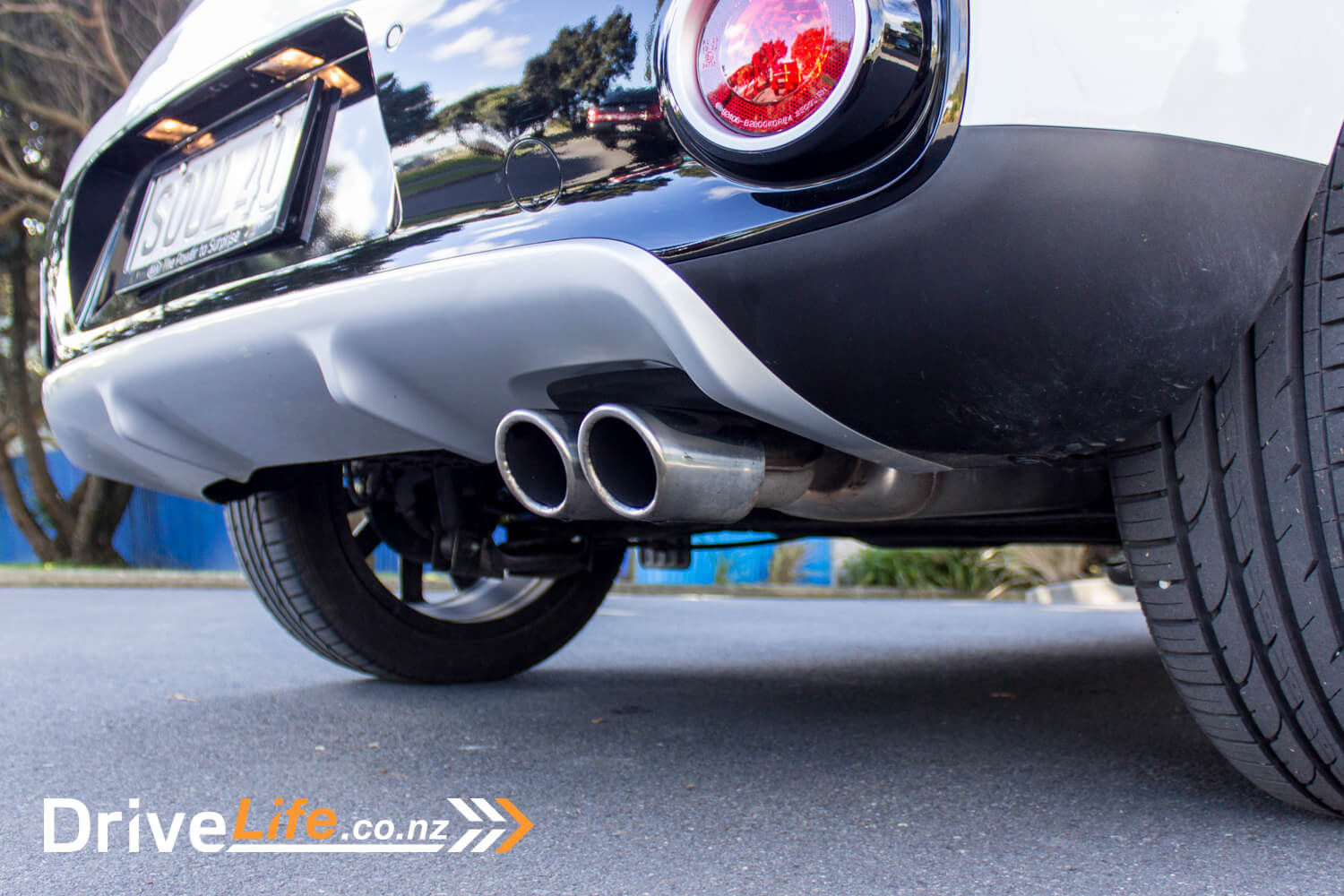
There’s a reasonable colour choice with your Soul; Acid Green, Caribbean Blue, Cherry Black, Inferno Red and Black, and also the White and Inferno Red that our test car was finished in.
Lastly, there’s thankfully just one boring grey choice – Titanium Silver. The Soul is a car that cries out for a bright colour.
First Impressions
In Inferno Red and white, our test car certainly stood out from everything else on the road. It’s unusual to get a two-tone test car these days, but boy did it get some comments – all positive.
It was all deja vu for me, as the previous Soul I tested (in Inferno Red) got lots of good comments too. I have to say I know of at least one person who bought a Soul after just seeing it in the showroom.
At the back, the Turbo model has a sexy little dual exhaust tip coming out the right hand side of the car, and they look super sporty.
The Inside
Like the non-turbo, this model also has contrasting stitching on the seats, steering wheel and dash – and it looks fantastic. It totally breaks up what is an all-black interior and it works. The orange stitching catches your eye, and adds class and style. It makes the car feel a lot more expensive than it is.
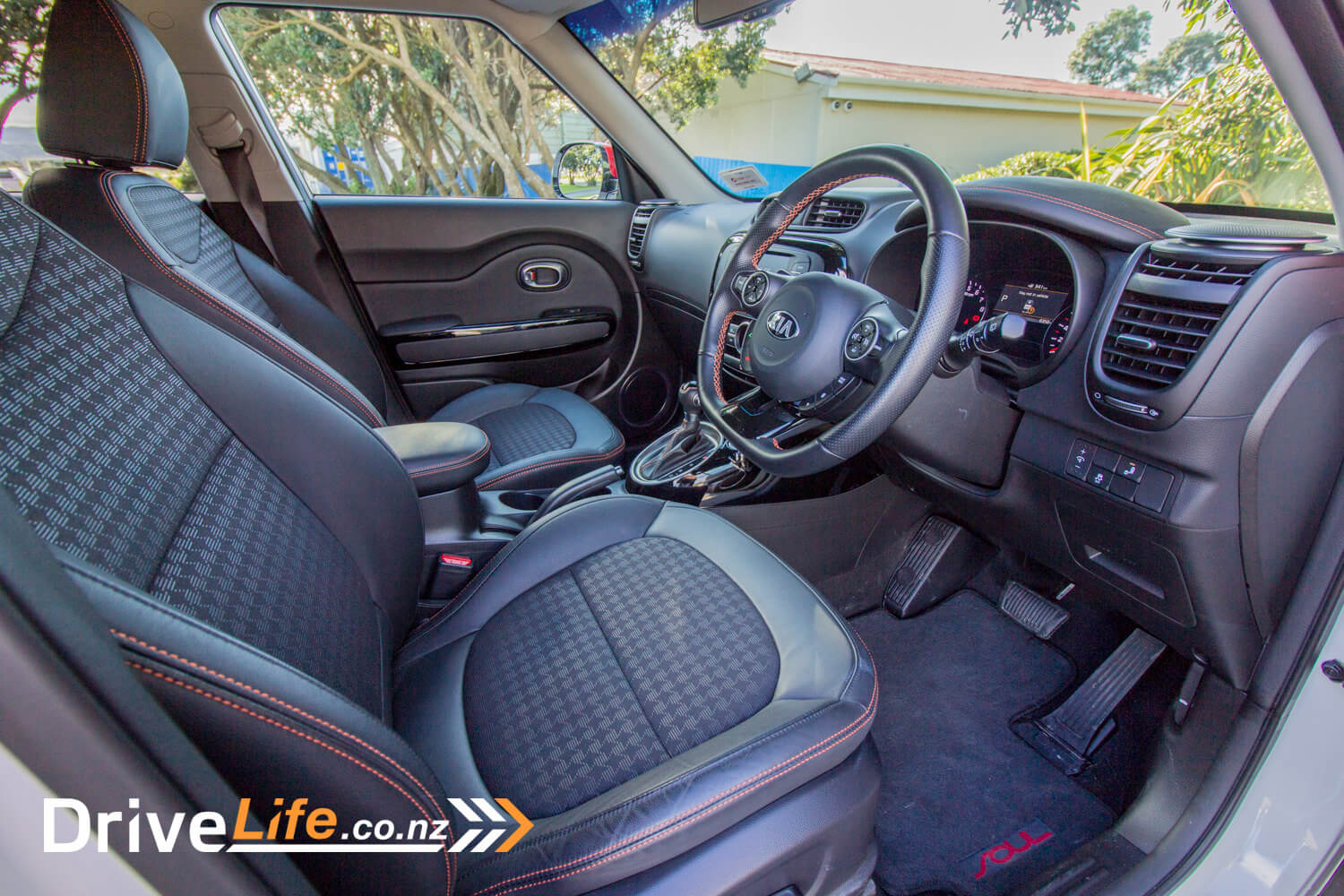
The funky exterior styling is carried over to the interior, with the Soul’s ‘floating tweeters’ poking up out of the dash. One non-futuristic item is the pull-up handbrake – so old school. I guess we’ll be waiting for a new full release of the Soul to get an electric handbrake.
Still on the not-so-good front, the Turbo has a ‘bigger’ screen than the model I last tested, at 5” media screen. But it’s still far too small. All my passengers commented on this, and most had a cellphone with a bigger screen than the Soul’s. It makes for tricky reversing (for the reversing camera) and desperately needs a few more inches. It looks like it is all about size, after all – five inches just doesn’t cut it these days, especially in a car costing $38K.
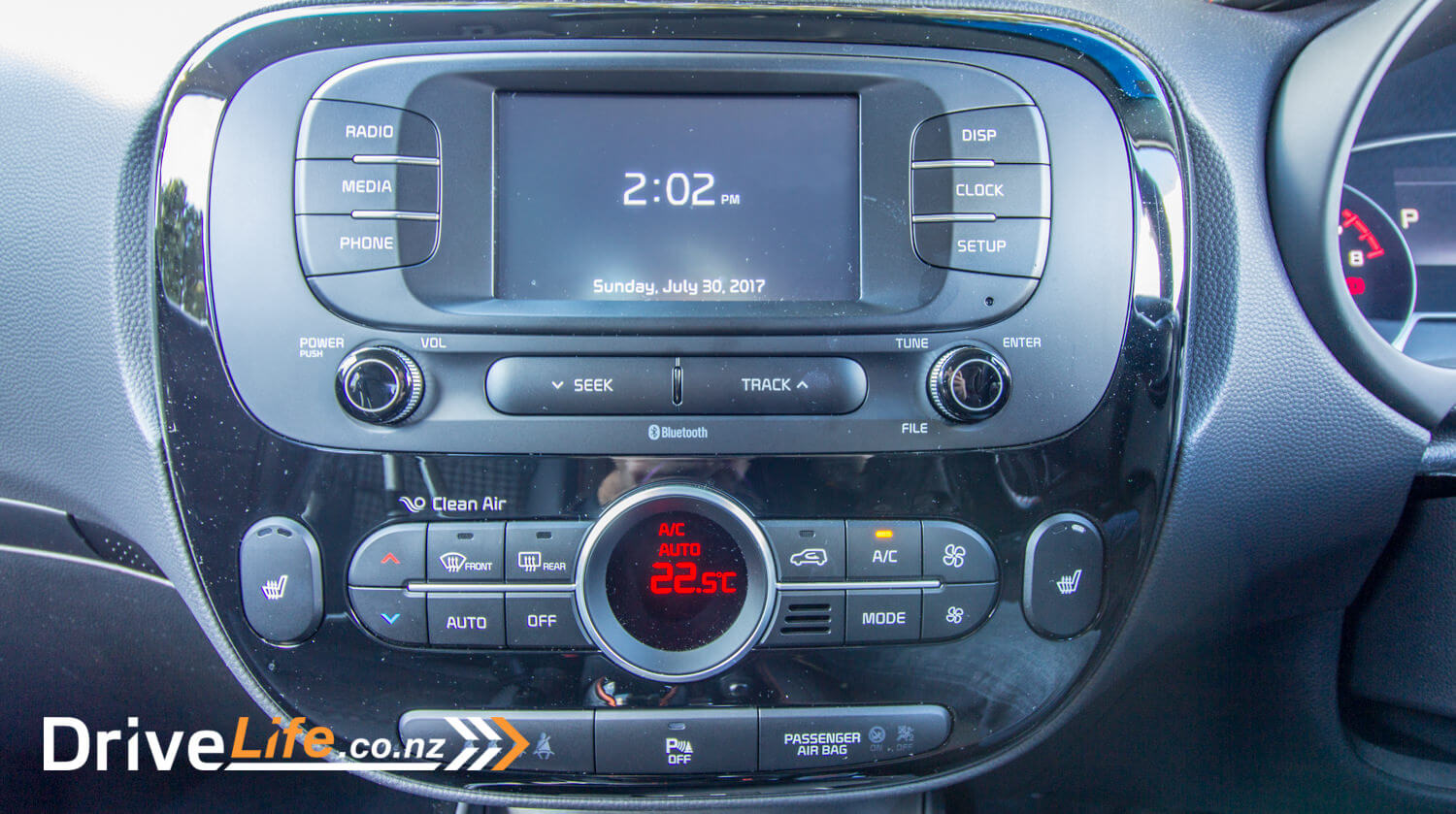
Another let-down are the hard plastics used in the cabin – too many. You get these really nice, orange-stitched leather seats, and then super hard plastic door panels.
At the front, you get a USB port, a 12-volt power socket and an AUX port – all very handy and easy to get to. Like the other models of Soul, there’s no Apple CarPlay or Android Auto. There’s no SatNav either – surprising in this top-spec $38,000 car.

There’s plenty of room in the front, and ample legroom in the back seat. After all, this is a fairly big, small SUV. It puts the Toyota C-HR to shame as far as rear legroom goes.
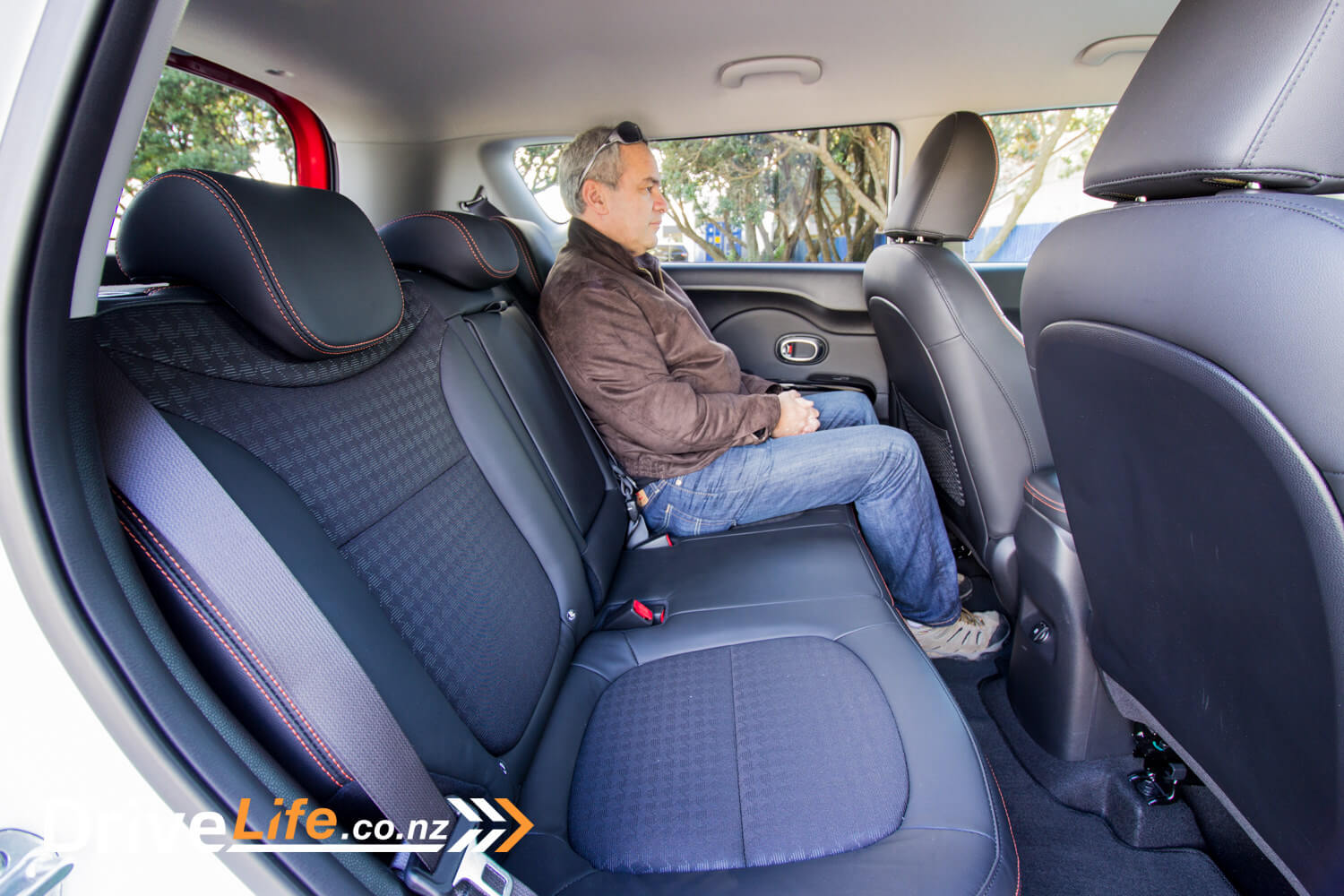
The boot is smaller than the non-turbo model (238 litres compared to 354). This is due to the compartment under the floor. There’s plenty of room in that compartment, and you would expect that after the loss of over 100 litres. Kia don’t supply any numbers for storage with the back seats folded down.

The Drive
For me, this whole test was about The Drive. I did like the Soul Limited (except for the tiny media screen) but for a 2-litre, it was pretty slow.
Straight out of the gate – what is the turbo version like? A LOT faster, as you can imagine. 150Kw and 265Nm are going to get a compact SUV around quickly. It’s not as frantically quick as I thought it would be, but wind up the revs and you can certainly cover ground quickly. Kia claims a 0-100 time of 7.5 seconds.
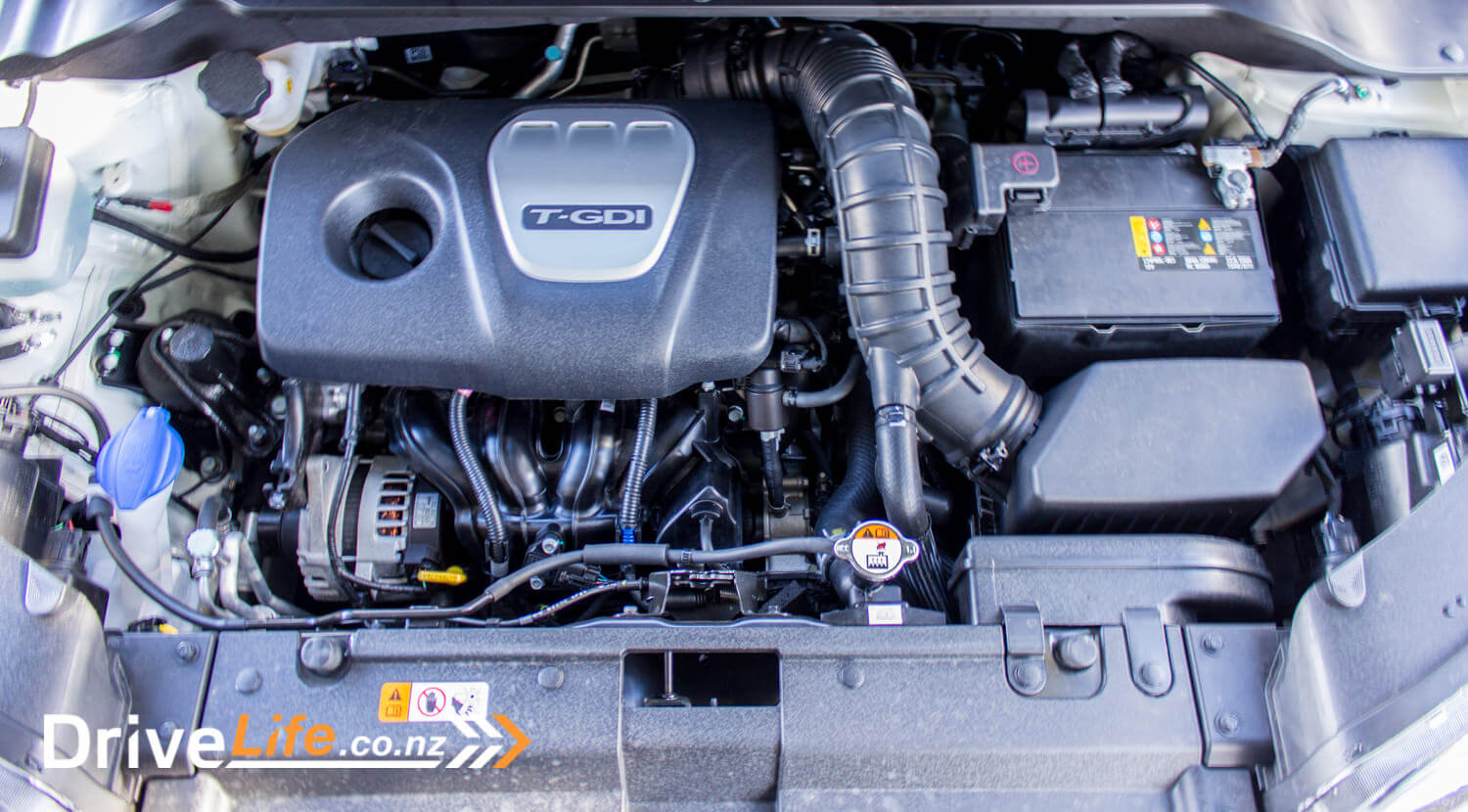
At one point I took the car on my Favourite Handling Road, to see if the handling and brakes are up to the performance of the motor. It was a mixed bag for me; the car gripped well, and would start understeering only when really pushing it through the corners. The brakes were great – fantastic feel from the pedal, and plenty of confidence given to the driver.
I couldn’t quite put my finger on ‘what was wrong’ until I realised it wasn’t a fun drive. It could certainly go, stop, and go around corners quite quickly, but it was a lot of work for the driver, and wasn’t the same amount of fun as say a Mini would be. Is that bad? Not really – I’m sure this isn’t what Kia added a turbo for.

But they did add a ‘Sport’ mode button to the steering wheel. This changes the driver’s information display to two gauges – turbo boost and torque output. Fun, but when you are driving in Sport Mode you don’t really have time to look at the pretty gauges. Sport Mode does give the car an extra kick, possibly only because changes happen sooner and the gears hang on longer, but it does give the car an extra edge over Normal Mode.
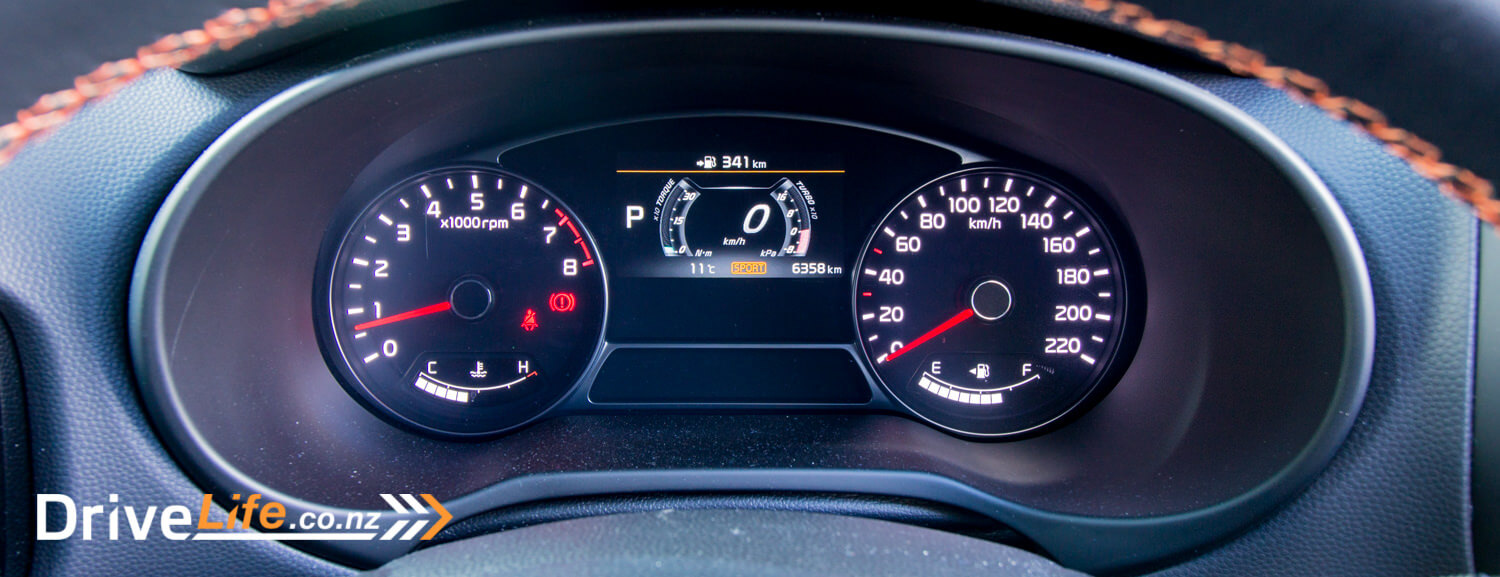
However don’t expect the engine to sound too sporty or raspy, even with those dual exhaust tips. It does sometimes make a nicer noise, but generally it’s quite a flat engine noise, but smooth nearly all the time. On the whole, the 1.6-litre motor is quite quiet, but our test car did have a tendency to make a noise I can only describe as a ‘gurgling’ noise. It wasn’t loud, but it was weird.
So as an everyday driver, does the turbo make this the perfect SUV? Yes and no. Yes in the way that visibility out of the car is good, and the high seating position helps you get through that town traffic. Motorway driving with Blind Spot Monitoring is a breeze, and the wide-opening doors helps this car on your Daily Drive.
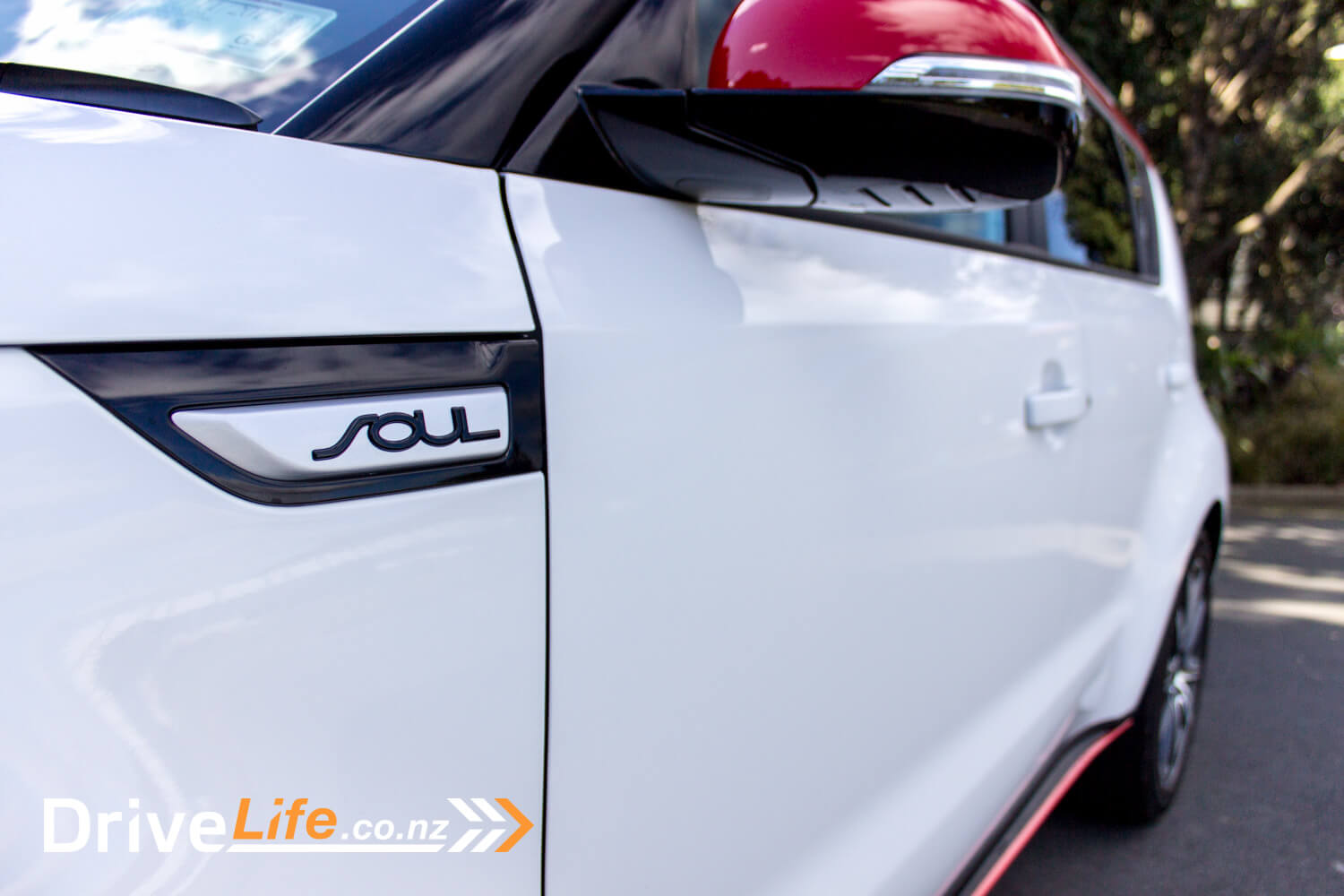
My main issue with the Soul Turbo was with the DCT transmission – and I realise this is a problem for all Dual Clutch transmissions. My driveway is on a slight downhill slope, and whenever backing out and up the slight incline, that DCT trans would not grab properly, then rocket backwards, then I’d come off the gas and brake, then the car would almost stop. Then I’d give it a little gas again, and repeat. Even my wife mentioned this – when accelerating away from a stop on a gentle throttle, there wouldn’t be much forward motion and then the transmission would ‘grab’ and away you go. Not a pleasant driving experience. It was the same for the Skoda Kodiaq and Fiat 500X I had as test cars before the Soul. Desperately hoping one day soon this will be sorted out.
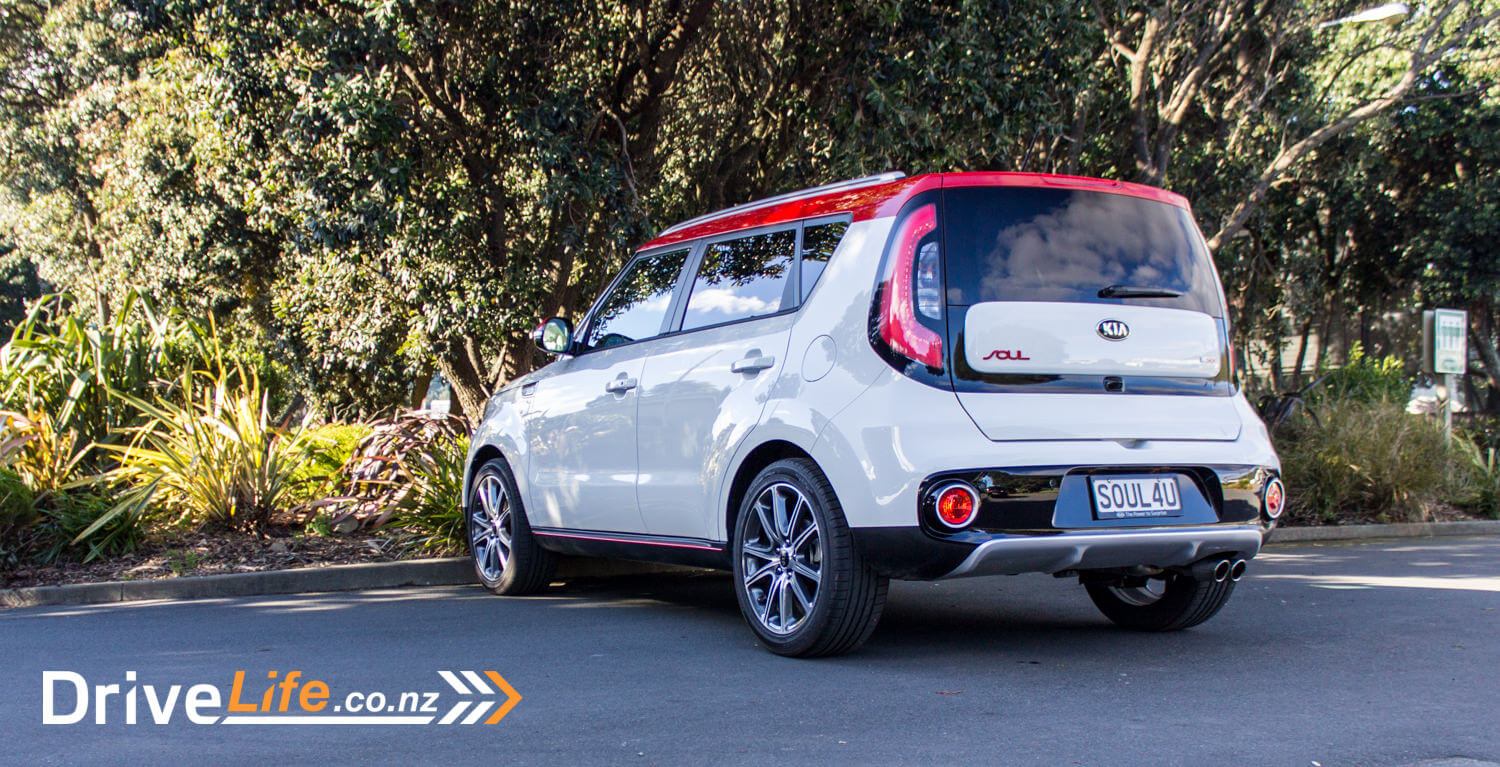
The ride is a little firm, sometimes jittery over smaller bumps, but on the whole the ride is acceptable. My first U-turn in the Soul Turbo reminded me of one of the highlights of the Limited model I drove – an extremely tight 5.3m turning circle. This thing really does turn on a dime.
It’s a shame Kia haven’t fitted the Soul with adaptive cruise yet; it’s old-school cruise control.
The extra bummer here is that the speed you have set cruise control at isn’t shown on the driver’s display. One thing that is shown is current speed in nice, big, chunky numbers. Next best thing to a heads-up display.
For fuel economy, Kia suggests that the combined rating for the 2.0-litre engine is 8.4L/100km. For my last test, I got 11.3. Pretty high. For the Turbo, the combined rating is 6.9L/100km, and I got 8.8 over 300km of driving. That still seems high for even a turbo 1.6-litre engine, but it’s never easy to match the manufacturer’s figures.
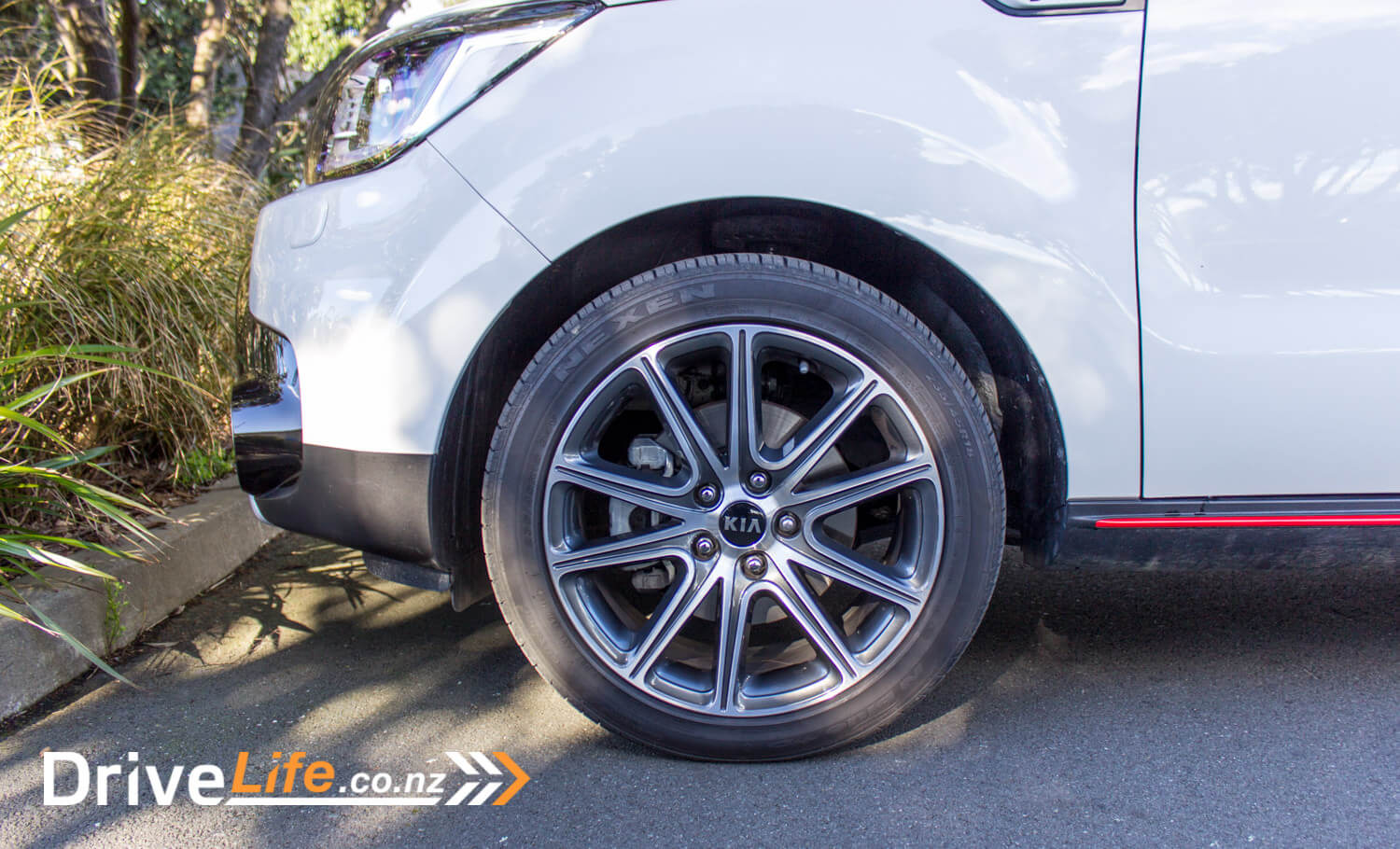
The Competition
| Brand/Model
(all FWD) |
Engine
(all petrol) |
Power/Torque | Fuel L/100km | Price – High to Low |
| Mitsubishi ASX VRX | 2.0-litre 4-cylinder | 112Kw/200Nm | 7.6 | $40,590 |
| Honda HR-V | 1.8-litre 4-cylinder | 105Kw/172Nm | 6.9 | $39,900 |
| Kia Soul Turbo | 2.0-litre 4-cylinder turbo | 150Kw/265Nm | 6.9 | $37,990 |
| Toyota C-HR | 1.2-litre 4-cylinder turbo | 85Kw/185Nm | 6.4 | $37,990 |
| Peugeot 2008 GT Line | 1.2-litre 3-cylinder turbo | 81Kw/205Nm | 4.8 | $36,990 |
| Skoda Yeti Monte Carlo | 1.4-litre 4-cylinder | 92Kw/200Nm | 5.8 | $36,990 |
| Holden Trax LTZ | 1.4-litre 4-cylinder turbo | 103Kw/200Nm | 6.7 | $36,990 |
| Mazda CX-3 GSX (with leather) | 2.0-litre 4-cylinder | 109Kw/192Nm | 6.1 | $36,595 |
| Renault Captur Dynamique | 1.2-litre 4-cylinder | 88Kw/190Nm | 5.4 | $35,990 |
| SSangyong Tivoli Limited | 1.6-litre 4-cylinder | 94Kw/160Nm | 7.6 | $34,990 |
| Suzuki S-Cross Prestige | 1.4-litre 4-cylinder turbo | 103Kw/220Nm | 5.9 | $33,990 |
| Ford EcoSport Titanium | 1.5-litre 4-cylinder | 82Kw/140Nm | 6.5 | $32,990 |
| Nissan Juke | 1.6-litre 4-cylinder | 86Kw/158Nm | 6.3 | $31,990 |
The Pros and Cons
| Pros | Cons |
|
|
What do we think of it?
Yet another review where I’m torn. I like the Soul Turbo – it ticks lots of boxes for me. But on the other hand, I also like the S-Cross, the HR-V, and the Peugeot 2008. Hell, for two grand more I can pick up a 7-seater Skoda Kodiaq.
But back to the Soul. For $2K more than the Limited you get more power and torque, some more features (although you lose some too) – does that make it good value? I’d say yes – I wouldn’t buy the 2-litre Limited, it’s just too slow and thirsty for a 2-litre car, but the Turbo? A far better car, and one that can hold its head high in the compact SUV segment.
But please Kia – a decent screen is well overdue.

4.0 Chevrons
| Vehicle Type | 5-door Compact SUV |
| Starting Price | $32,490 |
| Tested as Price | $37,990 |
| Engine | 1.6L T-GDI DOHC CVVT turbo petrol engine |
| Transmission | 7-speed Dual Clutch Transmission (DCT) |
| Kerb Weight, Kg | 1289 |
| Length x Width x Height, mm | 4140x1800x1618 |
| Cargo Capacity, litres | 238 |
| Fuel Tank, litres | 54 |
| Fuel Economy | Manufacturer’s rating, combined: 6.9L/100Km
Real World: 8.8L/100Km |
| ANCAP Safety Ratings | 5 Stars |
| Warranty | 5 Years, 100,000 kilometres
5 Years Roadside Assist |


